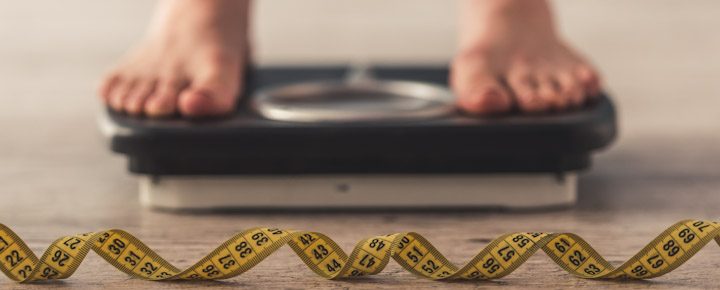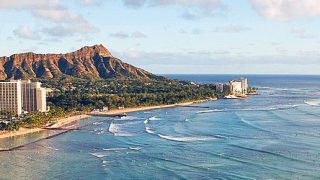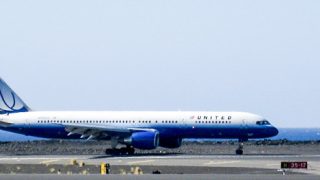The misery of long airline flights isn’t improving, and now even Hawaiian Airlines will be asking passengers on some routes to step on a scale to help the airline comply with FAA requirements. Hawaiian Airlines is joining Air New Zealand as the latest carrier requiring some travelers to get weighed before stepping onboard. It isn’t clear the number of passengers Hawaiian will weigh on the three routes or whether those routes will be expanded to include others.
As for Air New Zealand, they plan on weighing over 10k passengers this month to help determine the “weight and balance of the loaded aircraft.” That complies with their country’s aviation authority, while Hawaiian complies with FAA requirements.
The Federal Aviation Administration (FAA), European Union Aviation Safety Agency (EASA), and others globally require that airlines conduct surveys of passenger weight, along with that of their hand baggage, checked bags, and more.
Airline weight studies relate to a global increase in obesity.
According to a recent study by the World Obesity Federation, over half of the world’s population will be obese/overweight by 2035. That is a big increase from just a few years ago. And any significant change in the weight of passengers can relate to the size and number of seats, evacuation planning, and much more. Inaccurate weight data can lead to flight problems and result in the enforcement agencies issuing fines to airlines.
The FAA says that airlines participating in the weight studies can either 1) weigh passengers on scales before boarding or 2) ask passengers their weight and then add 10+ additional pounds for clothes. That is based on data from the 2019 advisory attached below.
In the case of Air New Zealand, the airline will anonymize data so that passengers and their weights are not correlated. Not only are they weighing passengers, but also food and beverages and everything else brought onboard the aircraft.
The heavier a plane, the harder the engines work, which means more fuel is consumed, reducing the distance an aircraft can fly.
Hawaiian Airlines begins passenger weight survey.
Hawaiian Airlines’ Alex Da Silva said the company is conducting its passenger weight survey on three routes. Those are between Honolulu and Pago Pago (American Samoa), Japan, and South Korea. To date, US mainland domestic flights are not included. Hawaiian is acting in compliance with FAA rules “requiring airlines to regularly update this data.” He said, however, that weighing remains optional for its passengers.
Hawaiian also conducted a similar weight survey last year. It was performed at the check-in counter and was done for passengers in both economy and business class.
As to why Hawaiian is participating in the survey, Hawaiian said previously, “It is important to calculate accurate weight and balance, and therefore the center of gravity of an aircraft for safe, efficient flight.”
Passenger weight issues came to light in the FAA circular below.
This started in 2019, when the circular below was issued. It relates in part to the size of airline seats and the fact that passengers are growing larger, which impacts flight safety, among other things. At that time, it was believed that just 30% of adults over age 20 were obese, but that is rapidly changing.
Airlines in the US are updating “standard average passenger weights.” The FAA wants airlines to undertake these surveys to determine average weights for passengers, crew, bags, and other items on the aircraft. The FAA circular calls for random surveys, as well as participation in them being elective rather than mandatory.
“Regardless of the sampling method used, an operator has the option of surveying each passenger and bag aboard the aircraft and should give a passenger the right to decline to participate in any passenger or bag weight survey. If a passenger declines to participate, the operator should select the next passenger based on the operator’s random selection method rather than select the next passenger in a line. If a passenger declines to participate, an operator should not attempt to estimate data for inclusion in the survey.” – U.S. Federal Aviation Administration.
On protectingf passengers’ privacy, the FAA says, “An operator that chooses to weigh passengers as part of a survey should take care to protect the privacy of passengers. The scale readout should remain hidden from public view. An operator should ensure that any passenger weight data collected remains confidential.”
At issue is that the average weights and balances may have been far too general and need to become more accurate. FAA is increasing the estimated average weight per adult during both the summer/winter months. That was previously 170/175 pounds overall, which is being increased to 190/195 pounds.
That includes increased carry-on bag weight, as passengers cram everything possible into them to avoid issues and costs of check bags, among other things. Carry-ons, according to the circular, are up 60% in weight, at 16 pounds, instead of the prior 10 pounds. The FAA is increasing the average weight to 200/205 pounds for men, whereas for women, it is increasing to 179/184.
The other critical weight variable on an airliner is fuel. The weight of that, however, doesn’t change.
Could FAA weight data change how many seats an airplane can have occupied?
It remains possible that passengers weighing more could result in fewer seats that can be occupied on a given aircraft. That isn’t yet clear, although you can expect to hear more about that. And that could also negatively impact airfares with the cost of transporting passengers increasing. This brings to mind Boeing 737 and Airbus A321 aircraft, for example, where every inch of space appears to be already taken.







Personally, this is a violation of people’s human rights! And I am shocked that this has gone this far! So, what’s next? They are going to start checking on peoples faces?
I do not see this idea getting far! Also, the bringing food into their planes, well, it is obvious that they want you to buy their $25 US sandwiches!!! which they run out and not everyone is fed on flights since they no longer provide food!
I say…..Hawaii and US Residents, boycott Hawaiian Airlines & New Zealand Airlines starting today, June 7th 2023
Did you read the entire article? All of the data is anonymous. The airline doesn’t care how much any individual weighs. Nobody is being charged more/less because of their weight. You can even opt-out of being weighed if it hurts your feelings.
This is a safety measure. Every few years, the airlines have to make sure that their load calculations (including bags/cargo) are still accurate.
The laws of physics literally demand that we know how much weight needs to be lifted. If the airline’s data shows that the average passenger is 160lb, but is actually 190lb, that’s a safety problem because you have an overweight aircraft.
This also helps with carbon emissions. Airlines can be more accurate with how much fuel they need to load.
Not at all. If a person purchases a plane ticket with an airline they agree to that company’s terms and conditions. End of Story. This is not an infringement on human rights in any way, shape, or form… no matter how large the shape ;). A company cannot infringe on something the consumer explicitly agrees to.
Personally, I think it’s an attack on anyone’s personal space to have to share surface area with the person sitting next to you if they can only be described as “overflowing” their seat.
If anyone is upset by this they’re likely the target change anyway and would be a welcome departure from the flight manifest.
Maybe, if someone refuses to be weighed they should be required to purchase a second, adjoining ticket?
Oh a plethora of lawyers will get “FAT” over this rule!
I think any airline weighing its passengers is entirely reasonable.. not just Hawaiian Airlines.
There is no reason a person who could be considered ‘underweight’ should have to pay exorbitant fees for their ‘overweight’ luggage if a person sitting next to them could have their weight described with a multiplier (2x, 3x, etc). This is especially the case for parents flying with children. If a family of four flies with two kids who weigh less than 100 pounds each, there should absolutely be a budget for luggage weight leniency. I also second Lewis G’s statement about airlines restricting passengers to seats they can actually fit in. It’s unfair to other passengers who are smushed… but not by the seat.
Maybe the airlines should cut down on the number of seats they cram into a plane and make the seats wider and more comfortable. Less people on the plane means less luggage. Stop cramming us in like sardines and your planes won’t be overweight.
Hawaiian Airlines needs a Maui to pago Pago route and japan to Maui and Maui to Korea.
I once flew Mokulele Airlines round trip to Molokai from HNL. They weighed each passenger and their baggage. This information was used for seat assignments for weight and balance purposes. Yes it was a single engine Cessna 308 but maybe if they got rid of fare classes and assigned seats by weight instead. I know, not gonna happen.
I fully support passengers being weighed. I’m old enough to remember when all passengers had to report their weight when purchasing a ticket
I was surprised when Airlines stopped asking for a person’s weight. Maybe that was the beginning of the age of obesity. When I was a kid we always got weighed every year in our classroom too starting in elementary school. I think the TSA machine we step into should automatically weigh passengers. A scale should have been incorporated into the TSA booth long ago. My weight fluctuates a lot. My driver’s license is always off by 5 pounds at least.
I have no problem with the weighing of passengers but they should also be weighing every piece of carryon luggage. It use to be unless you could store your carry on under the seat it couldn’t be brought on board. Overhead bins were for light items as well as coats and jackets and that was for passenger safety!
I’d be in favor of airlines adopting a “total” weight package that includes both passenger weight and luggage. It seems ludicrous that airlines charge for an “overweight” bag that is being checked by a passenger weighing 165 pounds but allows a 300-pound passenger to glide through because “their” bag is under the airline limit. I’d also be in favor of restricting obese passengers to seats they can actually fit in.
The airlines have reduced seat size over the years and now are going to fight returning to “semi comfortable” seats. So, they are going to pit a football team flying interisland vs a church group of teenage girls? How about the Halau’s flying with all their implements to Merrie Monarch? As the airlines cram more seats into a given space, they are going to get more weight. As they charge all the fees for luggage, they are going to get more carry on. This is self inflicted and the passengers have suffered. Flying used to be fun!! And we won’t go into the food….